|
|
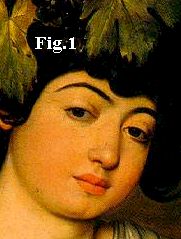 |
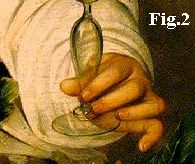 |
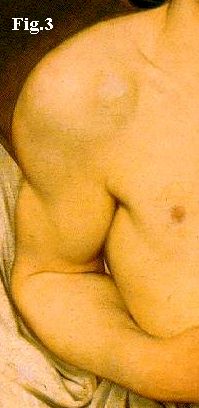 |
Fig.1 Here is a fine example of using rounded female forms to make a youthful face. Full cheeks and rouge lips!
Fig. 2Great delicacy is displayed in the grip and in the form of these young fingers.
Fig. 3The powerful masculine shoulder and arm are defined by the
flattened ovals of muscle.
If we combine all these we should get an ambiguous picture, neither male
or female, youthful or mature but with elements of them all.
|
|
|
|
Fig.4Such was the intention of Carravggio in his famous painting of Bacchus.
He provides us with a feast of ambiguities and it is an excellent example of how minor
variations of form can be altered for effect.
|
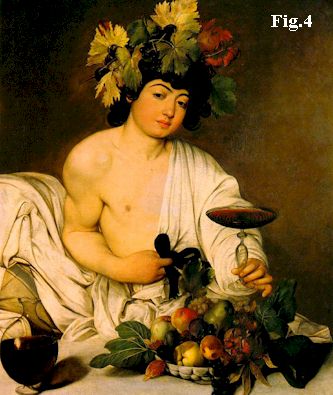 |
AMBIGUOUS OR DECADENT LINES
What if we alter a form that is female, by virtue of long hair, stockings, high-heeled shoes and by adding 'male' body lines? Remembering our defined lines ... say we flatten the muscles, make the joints a little more angular (aged). What will this do to the 'look'? Perhaps something like the work of this famous painter ....
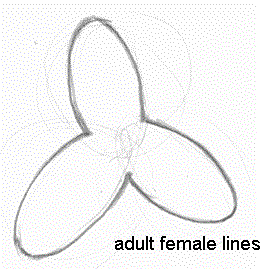
|
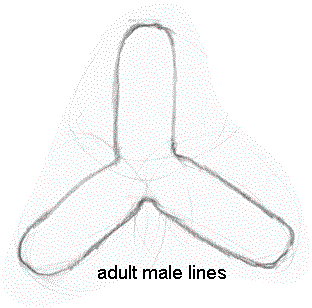
|
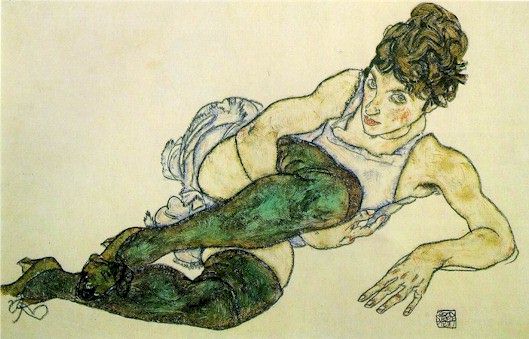
By now you are aware of why I call these lines ambiguous lines, but why decadent? The artist's intention is clear as these are lines in the process of decay and deterioration. But more to the artist's intent they are a mixture of a dual sexuality. This facility, a painter or drawer can employ, to alter the nature of a form by the deliberate use of line or form is a powerful (and sometimes cruel) tool indeed. You will note the alteration of the left forearm so the muscles are flattened from their usual rounded feminine form. The employment of such devices probably tells us more about the painter than the sitter and that is not very professional.
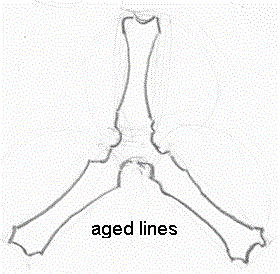
|
|
TRANSPOSING LINES TO LANDSCAPE
Vincent VanGough was a master at transposing line to landscape, and there is no ambivalance his line. He used clear purposeful lines in all his landscapes - even in areas without lines, like the sky. He often used line also as a pattern, and without form. Some of his pictures use the aged line and others the youthful. You can judge by the landscapes below. First look at the youthful lines in the 'Wheat Field and Cypress Pines' ...
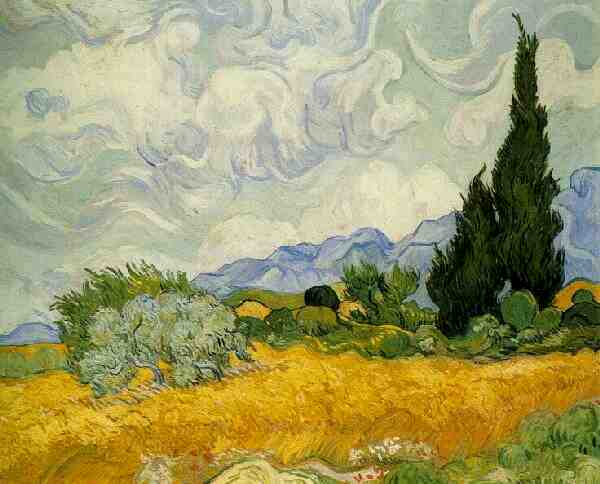
... then look at the aged olive trees. He also loved to paint old, twisted grape vines.
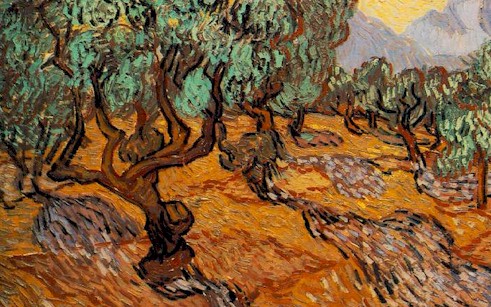
Did VanGough do this deliberately?.... I don't know but my hope is he did. Some might ask does it matter? If you think that you should not be reading this.

My final point here is that understanding the power of line, in drawing, is yet another spanner in the painter's tool kit used to dissemble and reassemble. Like every powerful device it should be used with humanity and sensitivity. Communicating using line, and form, is as potent as communicating with words, only more universal. The painting above is merely composed of consistent adult female lines where even the reverse curve of the nose gives the impression it is convex!. I must say I prefer this to the 'ambivalent' example.
STUDENT ACTIVITY: Make an outline drawing of Modigliani's nude shown above.
|